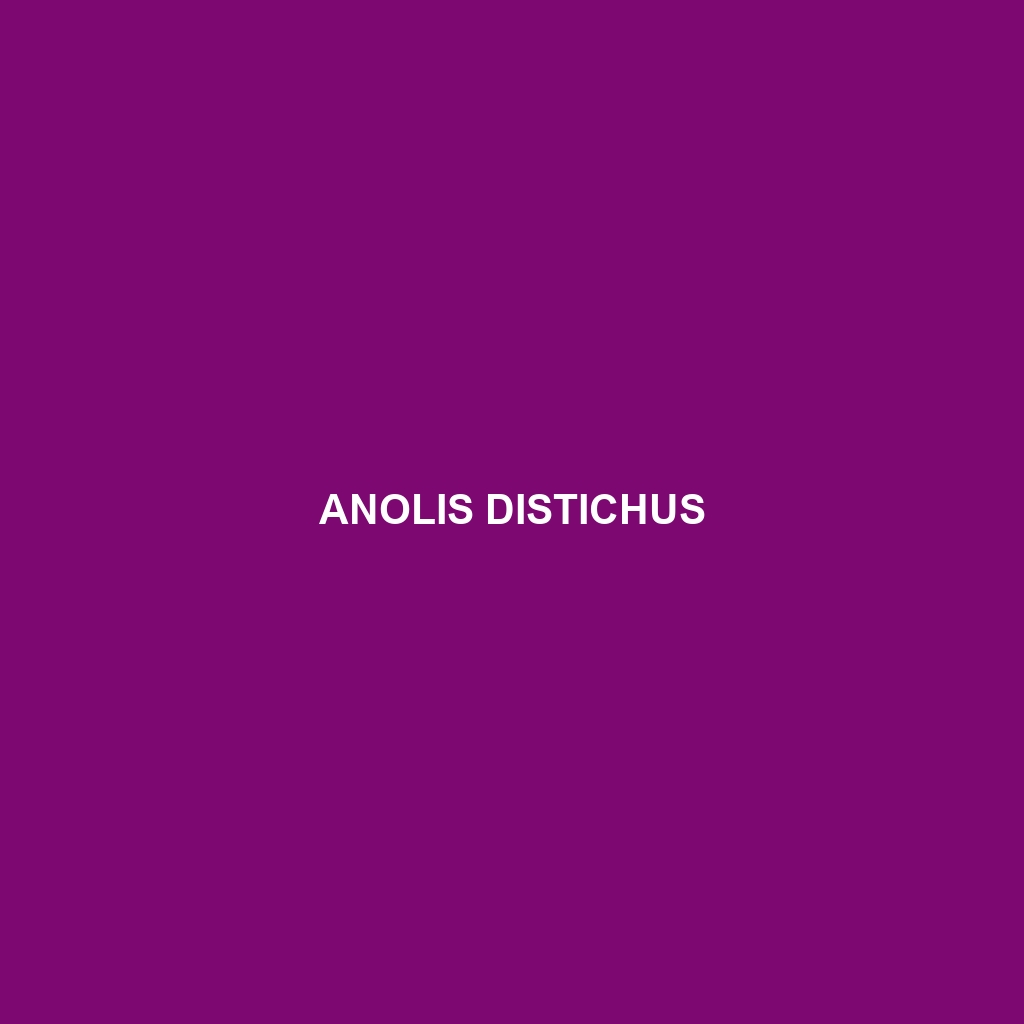Anolis distichus: A Comprehensive Overview
Common Name: Anolis distichus
Scientific Name: Anolis distichus
Habitat
Anolis distichus, commonly known as the brown anole, is primarily found in the tropical and subtropical regions of the Caribbean. Its geographic range includes islands such as Hispaniola, Cuba, Puerto Rico, and the Bahamas. This species exhibits a preference for various habitats, including wooded areas, dry forests, urban gardens, and even mangrove swamps, making it quite adaptable to different environmental conditions.
Physical Characteristics
Anolis distichus typically measures around 5 to 8 inches in length, including its tail. Its coloration generally varies from brown to green, often with darker blotches that can help in camouflage among leaf litter and bark. This species possesses a distinctive dewlap, which is brighter in males, playing a crucial role in territorial displays and attracting mates. The body is slender, equipped with long limbs that facilitate rapid movement through vegetation.
Behavior
Common behaviors exhibited by Anolis distichus include basking in the sun and territorial displays, especially during the breeding season. Males often engage in head-bobbing and dewlap extensions to assert dominance over their territory. This species is also known for its climbing abilities, utilizing both vertical surfaces and dense foliage to evade predators.
Diet
The diet of Anolis distichus is primarily insectivorous, consisting of a variety of small insects and arthropods. Common food sources include crickets, grasshoppers, spiders, and small beetles. This flexibility in feeding habits allows Anolis distichus to thrive in different environments, ensuring adequate nutrition year-round.
Reproduction
Anolis distichus typically breeds during the warmer months, with peak activity observed from April to September. Males exhibit territorial behavior to attract females, with courtship displays that include extensive dewlap displays. Females lay 1 to 2 eggs per clutch, burying them in sandy or loose soil, and the eggs usually hatch within 6 to 8 weeks.
Conservation Status
Currently, Anolis distichus is not classified as endangered or threatened; however, habitat destruction poses a potential risk to its populations. Continuous monitoring is vital to ensure that this species maintains its population numbers in the face of environmental changes.
Interesting Facts
One fascinating aspect of Anolis distichus is its ability to regenerate its tail after losing it due to predation or stress. This remarkable adaptation does not only aid in survival but also contributes to its resilience as a species. Additionally, Anolis distichus has been widely studied for its sexual dimorphism, making it a popular subject for research on evolutionary biology.
Role in Ecosystem
Anolis distichus plays a significant role in its ecosystem as both a predator and prey. Its feeding habits help control insect populations, which can contribute to the overall health of its environment. Furthermore, it serves as a food source for various birds and larger reptiles, highlighting its importance in the food web.
